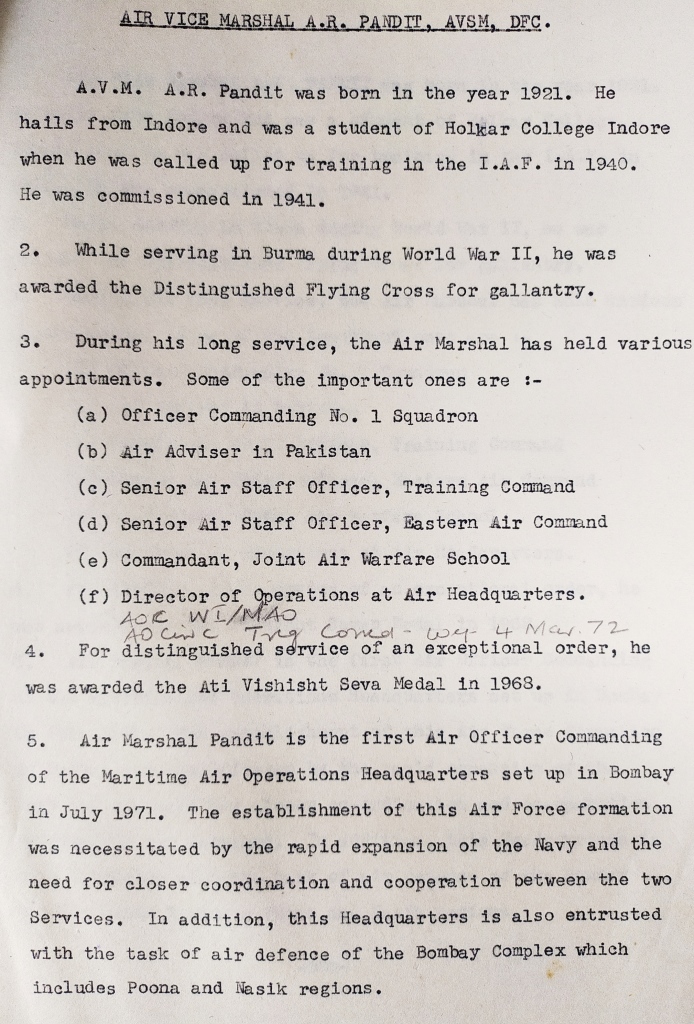There are milestones in an officer’s career that are etched in stone. The day you got commissioned, the day you commanded your first unit as “CO” , the day you fly into operations, the day you command a force. For one officer, his milestone of commanding a unit has been forgotten or not recorded by the IAF. Anchit Gupta writes about righting a wrong in the Commanding Officer leader board of the IAF’s senior-most Squadron – No.1 Squadron IAF. The name of one of the commanding officers has been missing for nearly 73 years (At the time of writing) . Building the evidence to support this assessment took years of effort – with the conclusive evidence coming from the Govt of India’s Archives
There are milestones in an officer’s career that are etched in stone. The day you got commissioned, the day you commanded your first unit as “CO” , the day you fly into operations, the day you command a force. For one officer, his milestone of commanding a unit has been forgotten or not recorded by the IAF. Anchit Gupta writes about righting a wrong in the Commanding Officer leader board of the IAF’s senior-most Squadron – No.1 Squadron IAF. The name of one of the commanding officers has been missing for nearly 73 years (At the time of writing) . Building the evidence to support this assessment took years of effort – with the conclusive evidence coming from the Govt of India’s Archives
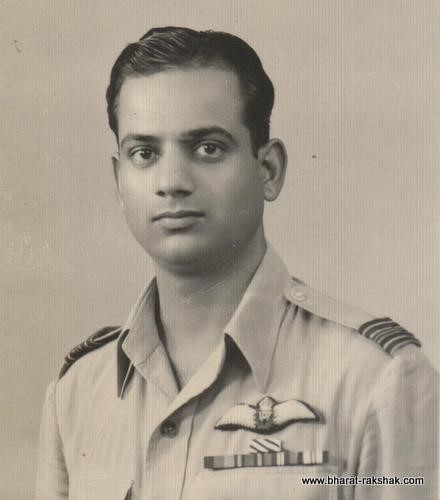 The first squadron of the IAF carries immense history and has always been a subject of deeper study for all concerned. For nearly a decade since its formation, it was the only squadron the IAF had and all the IAF personnel on the Air Force List were posted to the squadron. Independence and partition, was a sad blow to the IAF with it being decided that No.1 Squadron assets would be transferred to PAF, leading the No. 1 Squadron to be number-plated for the time being.
The first squadron of the IAF carries immense history and has always been a subject of deeper study for all concerned. For nearly a decade since its formation, it was the only squadron the IAF had and all the IAF personnel on the Air Force List were posted to the squadron. Independence and partition, was a sad blow to the IAF with it being decided that No.1 Squadron assets would be transferred to PAF, leading the No. 1 Squadron to be number-plated for the time being.
The last of the Operational Record Books (ORB) for the squadron stored by the British at the UK National Archives ends with the month of April 1947 were Squadron Leader Ranjan Dutt (IND/1594) relinquishing command on 14 May 1947. The Squadron was activated again in Feb 1953 on the Vampire aircraft under the command of Sqn Ldr E J Dhatigara (1899). In the seven decades since this period, the IAF in all its publications has believed this to be the chronology of the command of No.1 Squadron.
One lone voice though, Amit Javadekar, Grand Son in Law of Air Marshal AR Pandit (1707), an ardent follower of IAF history, and a long-time contributor to this site, kept reminding us that as per all the documents with him given to him by late Air Marshal Pandit, then Sqn Ldr AR Pandit had commanded 1 Squadron taking over after Sqn Ldr Ranjan Dutt. Having seen CAW publications and various coffee table books published by IAF not having any reference to this, it was tough for the administration to believe this. But, we decided to continue keeping our eyes open to evidence and looking harder.
Some of the very convincing evidence made by Amit was the following :
1. Operational Record Book of No.2 Squadron:
ORB of 2 Squadron showing A R Pandit being posted out to 1 Sqn in the rank of Sqn Ldr in May 1947. While the image below doesn’t give a date of his posting out, he is recorded in the subsequent pages as flying on sorties till the last week of the month. Pandit was actually a Flight Commander in the rank of Flt Lt with 2 Sqn then, and this note was clearly an indication of his posting out on picking up the rank of Sqn Ldr. It must be remembered that in that era only Squadron Leaders commanded fighter squadrons and for someone to be posted in that rank to another squadron was only for the appointment of being the Commanding Officer.
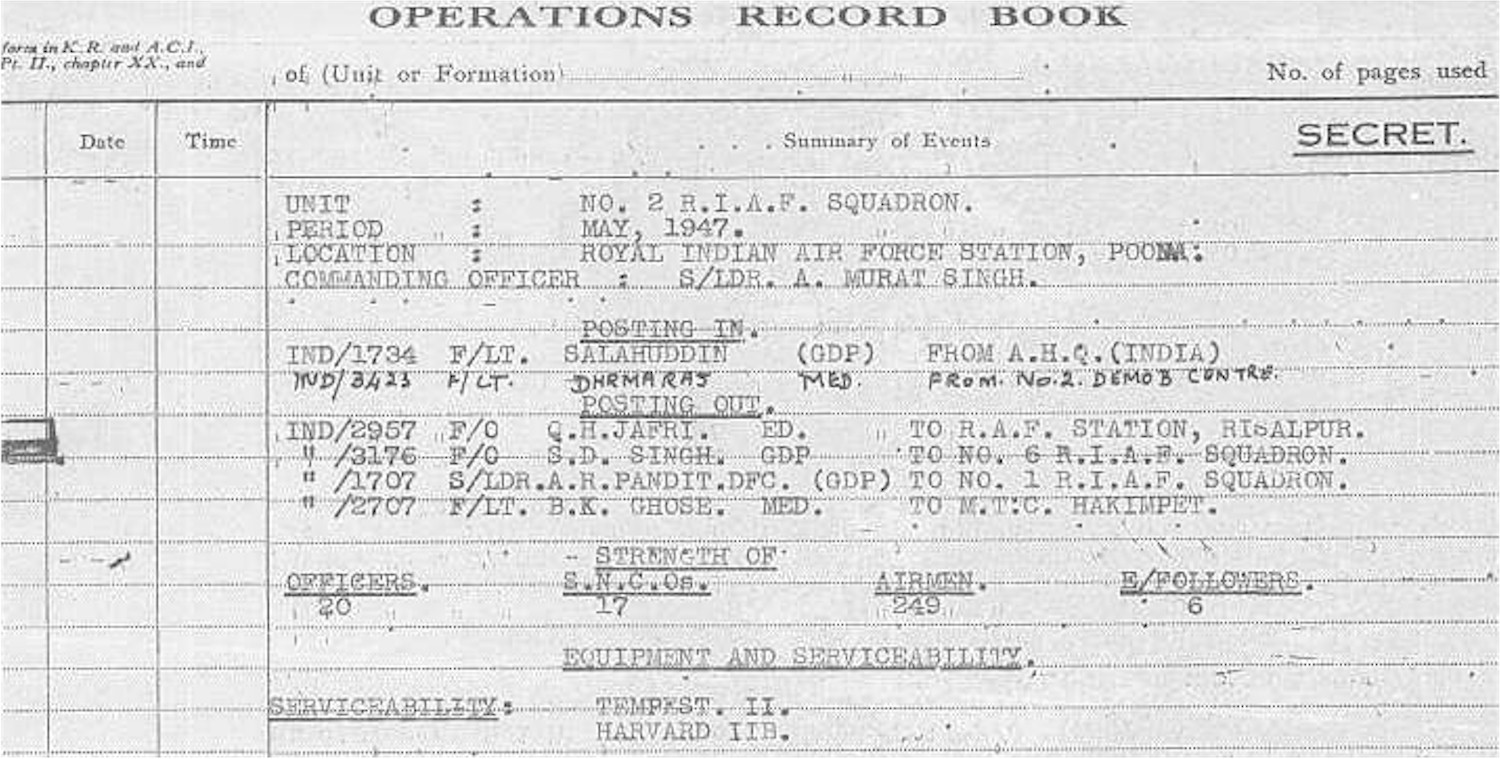
2. Record of Service Page from Air Marshal Pandit’s Logbook:
Air Marshal Pandit’s Service Record from his logbook giving the dates of service with 1 Sqn IAF from 26 May 1947 to 10 July 1947. – This is more of a clue than a piece of confirmed evidence as it is a document that the officer maintains personally, and while it is very reliable and is not in itself sufficient to amend the record officially, as it does not mention his appointment, just the unit and dates.
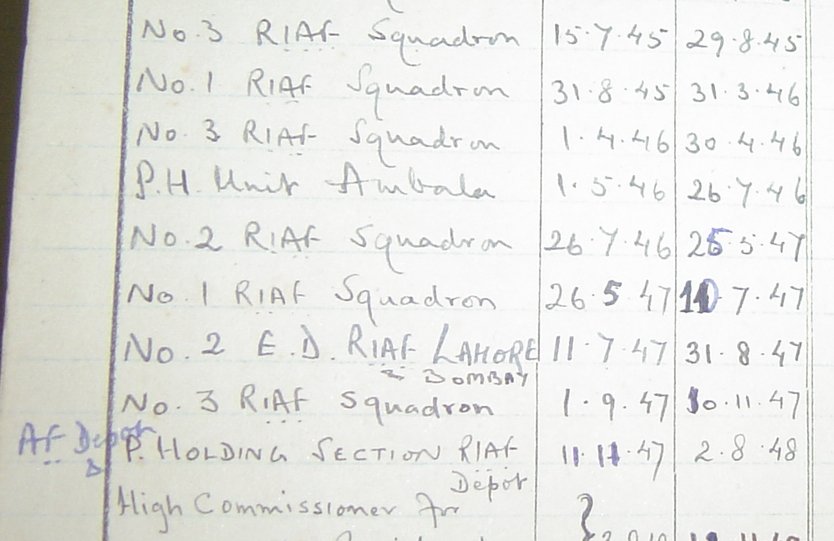
3. Dinner Menu of 1 Squadron Re-union Dinner from 1949:
There was a reunion organised 1949 by ex-members of No.1 Squadron at the Gymkhana Club in Delhi. The Programme Card listing Wg Cdr Pandit as an ex-CO – This was by far the most compelling evidence. The invites published for the occasion clearly list AR Pandit as an ex-co of the Squadron.
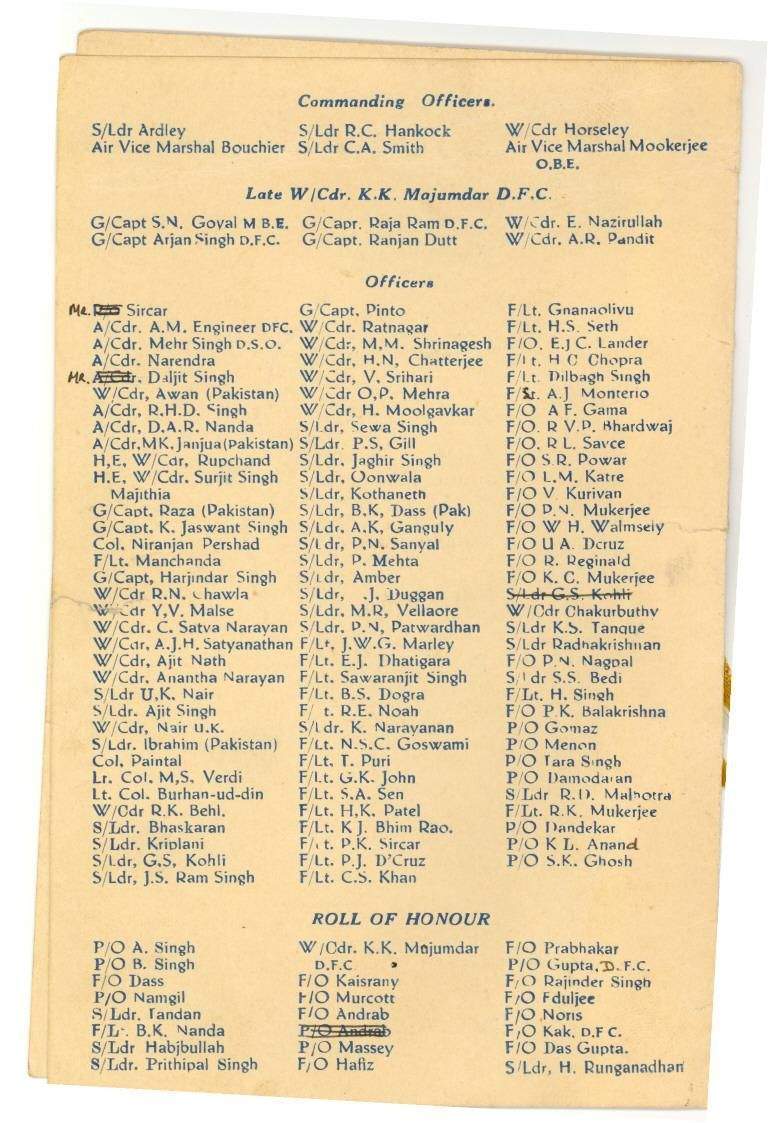
4. News Paper Clippings from the 70s:
Two newspaper clippings from 1971 and 1973 announcing Air Marshal AR Pandit taking command of MAO and MC respectively. Both mention command of 1 Sqn during his career. (Annexure 4) – While it is a newspaper article, usually the write-up is provided by the Officer or the IAF after taking relevant approvals on the draft content. Moreover, no serving officer would be claiming facts in a release that was not part of the official record.
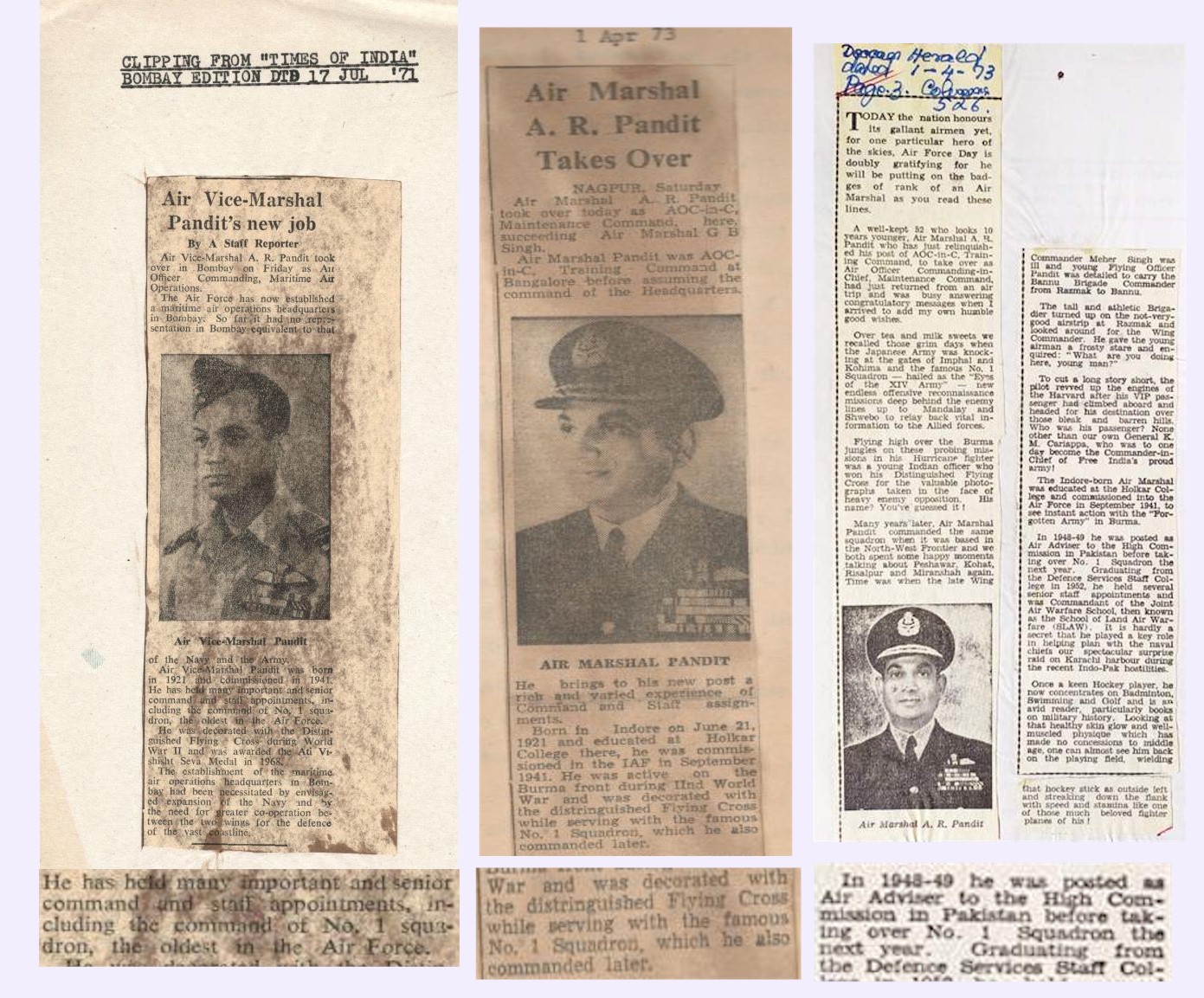
The clippings show the highlighted portion that mention his command of 1 Squadron. Additionally the third clipping is from Deccan Herald about the AF Day 1974 mentioning his command of 1 Sqn in NWFP
5 Email Conversations with senior officers about this topic :
In 2016, two senior veterans confirmed various versions of this fact.
Air Marshal Philip Rajkumar, recollected that in 1967, AM Pandit noticed his name missing in a brochure published at that time and wanted the CO to rectify it.
Similarly, Air Marshal Teshter Master, who was CO of 1 Squadron in 1984, recollected reading about AM Pandit being CO of the Squadron earlier.
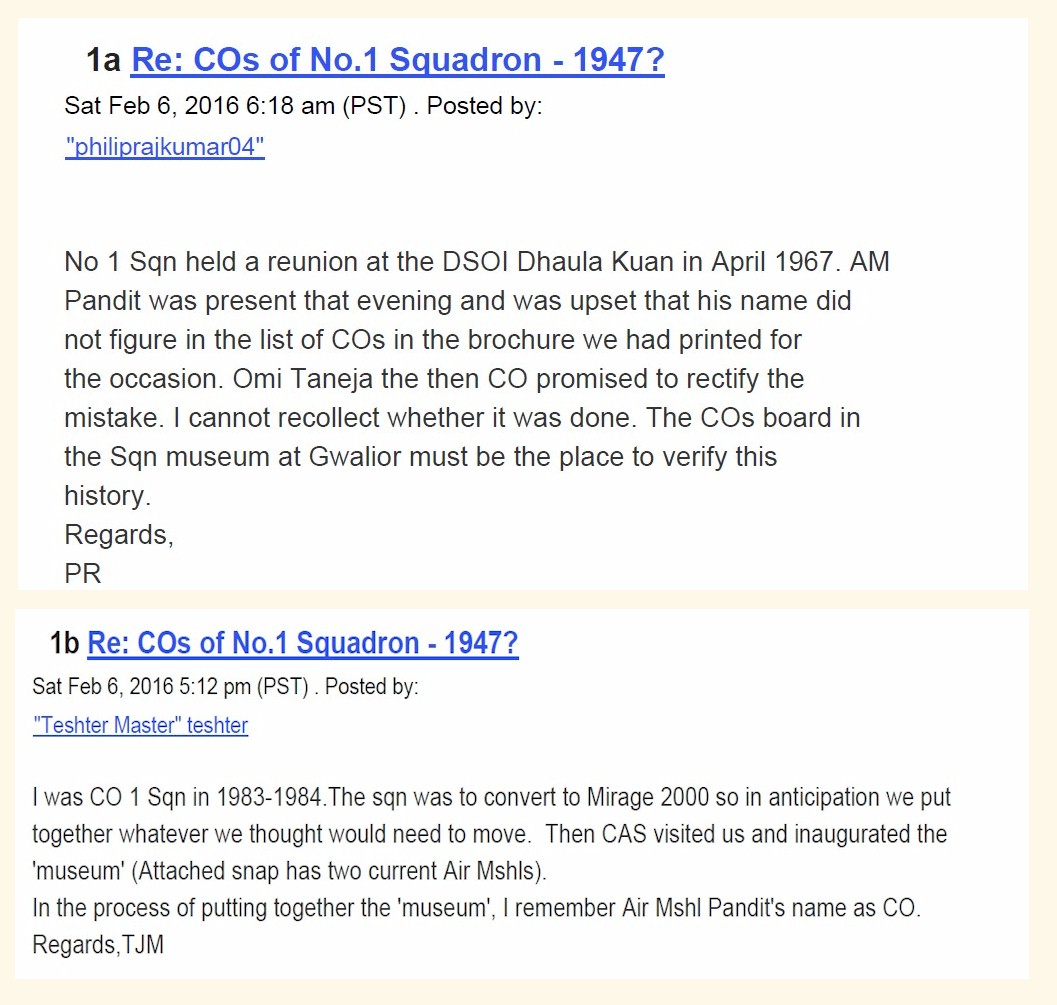
6 An Official “CV” prepared by AM Pandit while in service:
A CV prepared for press releases when Air Marshal Pandit was still in the rank of AVM is reproduced here:
7 . The Crash of a Tempest II Fighter at Peshawar on 11th June 1947
The RAF records a crash of a Tempest II fighter belonging to the 5 Sqn, RAF at Peshawar on 11th June 1947. The aircraft, PR646, was flown by Squadron Leader Pandit , It crashed on landing after the undercarriage collapsed.
This was reported in Colin Cummings “Final Landings”. The initials were not given, but it was assumed that it was A R Pandit. The 5 Squadron RAF ORB has May and July available – but missing June. It confirms that in May 1947 that pilots of No.1 and No. 9 Squadron were sent to them for Tempest Conversion Training. It seems only logical that Sqn Ldr A R Pandit arrived at Peshawar for conversion training and was involved in the Crash. Pandit’s log book does not have any entries for flying after 16 May 1947 (when he was with 2 sqn). The next entry is for 7 June where he flew in a Harvard as 2nd pilot/passenger. The pilot was a Flt Lt Malett RAF. Although they flew a Harvard the description of this sortie is ‘Tempest Circuits’. The usual monthly summary flying table signed by the CO is missing for this month. The assumption perhaps is that after the familiarization circuits in the Harvard, his first Tempest flight resulted in the accident. And any injuries he may have had would have prevented him from updating his logbook
———————————————————————————————-
Was all the above enough to take to IAF and convince them that No. 1 Squadron had not had its last CO relinquish command on 14th May 1947 and continued to be in existence for a little longer under a different CO? Maybe not, till the year of Covid, presented us with new pieces of evidence and made it clear to us that there is a strong case for IAF to consider revising their official records.
The clinching evidence, however, comes right out of the History Division at the Ministry of Defence.
8. The Personnel Record Sheet from the Ministry of Defence, India:
The following finally is an official career record of Air Marshal AR Pandit, and it clearly mentions that he commanded 1 Sqn in June 1947. The document appears to be a career information sheet submitted to the Mod on 28th October 1947, and signed by then Sqn Ldr A R Pandit. This was a critical time when the IAF was consolidating its records after partition and it is likely that this was submitted as a matter of record. This was the closest contemporary document one can find that came straight from the Ministry of Defence’s Archives.
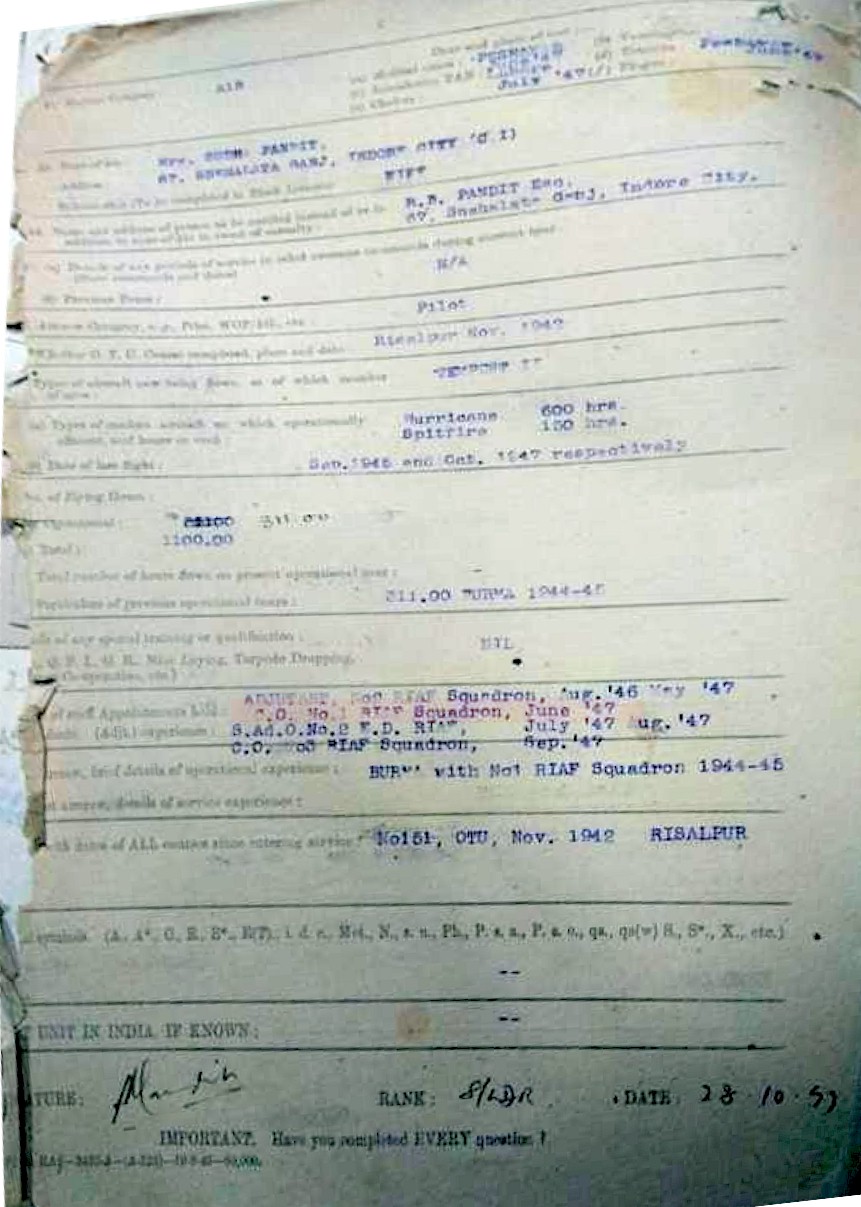
Conclusion:
This should definitely be the elusive and yet conclusive proof we have been waiting and sorts out the mystery finally. Reviewing all the above, the records with No.1 Squadron IAF should be updated to reflect the time Air Marshal AR Pandit with the squadron as its Commanding Officer.
Coda
There is one coda to the story of the missing “Tiger No.1”. Air Marshal A R Pandit was not the last Squadron Leader to command No.1 Squadron before disbandment. Recently evidence surfaced that Sqn Ldr Zahiruddin Ahmed IND/1672, who raised the first PAF Squadron at Peshawar after Independence officiated as the CO of 1 Squadron, IAF pending its disbandment. In early 1947, Zahiruddin Ahmed was the CO of No. 8 Squadron, IAF. On partition and division of assets, No.8 Squadron was allocated to the IAF – and Ahmed, who opted for the PAF was sent to take over the assets of No.1 Squadron IAF and re-raise it as No.5 Squadron PAF on 14 August 1947. Ahmed arrived on 1 Aug 1947 and acted in some capacity as the last officiating CO of 1 Squadron in the last two weeks. Ahmed himself noted his posting to 1 Sqn in his logbook, and the logbook of Air Chief Marshal Katre confirms that Ahmed signed off on Katre’s July flying in the capacity of CO, 1 Sqn.
Written by Anchit Gupta on 1 November 2020 .
Supporting Material provided by Amit Javadekar and Jagan Pillarisetti.
Our Thanks to Veterans and other Researchers for providing us with material along the way to establish this fact.
